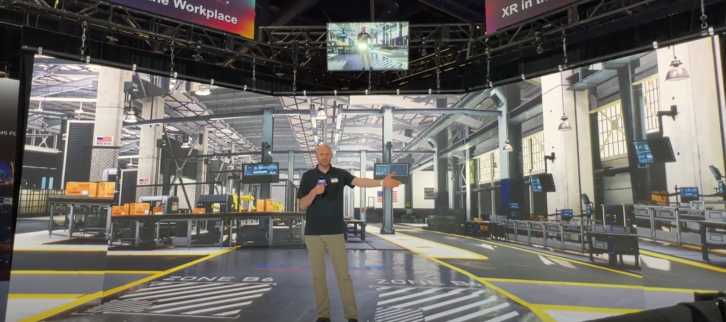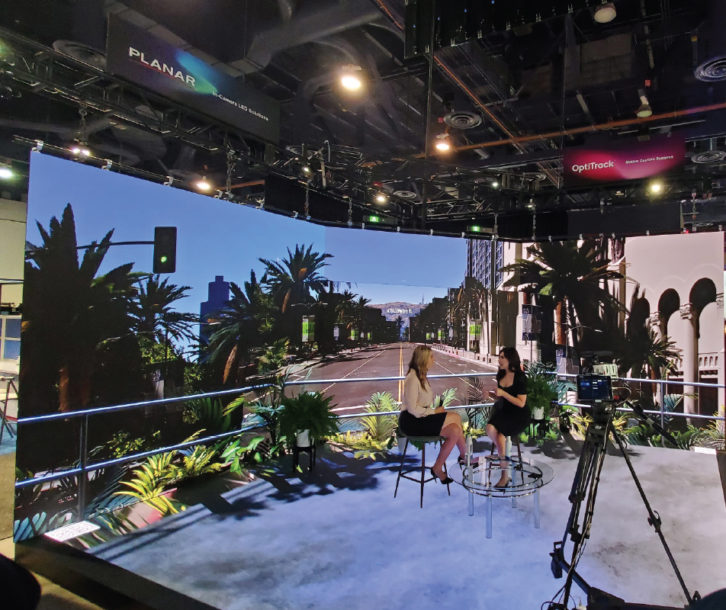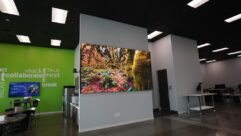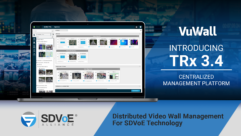
Increasingly we see customers from a variety of industries interested in incorporating extended reality (XR) stages and virtual production technologies into their communications efforts. They are exploring the opportunity to bring professional film, video and broadcast production techniques in-house as a means to raise the professionalism, level of audience engagement and speed with which they communicate to key audiences such as customers, prospects, employees and owners.
While the technology has become more accessible, a well-functioning XR solution still requires a range of essential components and the expertise to bring those together in an effective workflow. These essential components include the LED backdrop, cameras, lighting, motion capture system, dynamic content, render engine and confidence monitors. With the system and expertise in place, organizations get tremendous leverage as they reach audiences wherever they are with fresh and compelling content.
The LED backdrop selection is often one of the most important decisions and there are several factors worth considering when evaluating these displays.

Deployment Versatility
The XR stage must fit the physical space that has been allocated while also accommodating the planned usage and camera angles. It is important to consider the LED display’s mounting and installation options such as free-standing, hanging, wall-mounted, curved or faceted and mobile. In addition, the design may require a floor or even a ceiling. Considering this from the start ensures that the LED displays being selected meet the physical requirements of the space but also that the LED line incorporates components, such as floors, that are designed to meet the specific structural requirements while also matching visually with the rest of the XR volume.
Spectacular and Lifelike Visual Performance
State-of-the-art image quality is key for producing the lifelike in-camera content companies are looking for and audiences expect. Factors such as color space, precise and flexible color management, better off-axis viewing angles, refresh rate and gray scale performance can be important. Pixel pitch is an important factor where finer pitch may allow for more flexibility with regard to focal points and placement of talent within the space. Often customers benefit from in-person demonstrations or tests to fully understand how these factors come together real use.
Proven Compatibility
The interplay between camera and LED display is critical to the resulting output and requires a level of awareness and compatibility involving the camera, video wall controller and the video wall itself. The ability to synchronize around the camera imaging system, frame rates, color space and camera movements is important for eliminating artifacts in the resulting content.
Hassle-Free Maintenance
LED video walls should feature fast and simple front-side module extraction and replacement, and allow for access to all serviceable components without disrupting the overall wall or floor layout. Easy assembly and reconfiguration of video walls can be important in certain use cases and as needs evolve. A manufacturer’s service organization, warranty track-record and investment in local expert personnel are always important factors when considering an LED display selection.










